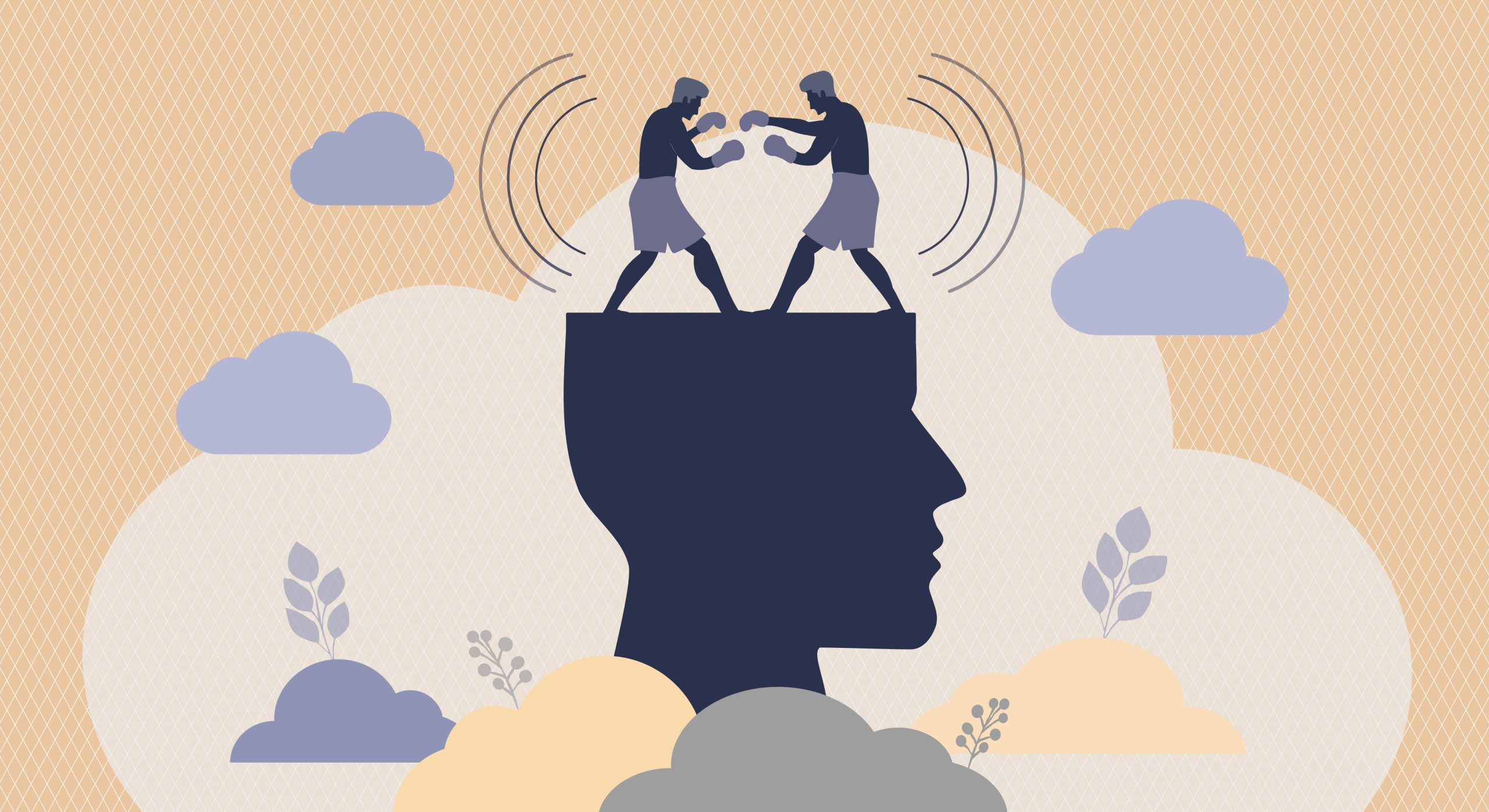

Cognitive Dissonance

How Could We Have Been So Stupid?
From Founder + CEO, David Nason
It didn’t take long for the newly minted president, John F. Kennedy, to realize he had made a terrible mistake.
The lengthy and contentious campaign to become the 35th President of the United States was political trench warfare. It was an unapologetic test of will, guts, intellect, and attrition. Kennedy’s campaign was relentless, berating the opposition for their handling of the Castro situation in Cuba. He consistently attacked President Eisenhower and Vice President Richard Nixon, calling them both incompetent for their inability to deal with the encroaching ‘red scare’ taking hold a mere 90 miles from the continental US.
Cuba had been in an ongoing power struggle for close to a decade. In 1952, General Batista seized the Cuban Presidency from Carlos Prio Socarras. By 1958, Batista fled into exile, fearing for his life, and by 1959 the leader and founder of the “26th of July Movement”, Fidel Castro, became Prime Minister of Cuba.
Shortly after the success of Castro’s Cuban Revolution, new groups developed in an attempt to take power for themselves. Soon after quashing these counter-revolutionaries, Castro’s government began nationalizing oil refineries and US assets in Cuba. This led the US government to become increasingly concerned about what was being called by US Secretary of State Christian Herter as ‘Castro’s Bolshevik endgame’.
By March of 1960, Cuba was openly hostile toward the US. With the support of President Eisenhower, CIA Director Allen Dulles, along with Deputy Director Richard M. Bissell Jr, began drawing up plans to overthrow Castro.
By the time they handed over the Oval Office to Kennedy in January of 1961, the CIA had been recruiting and training an anti-Castro force for close to a year. A plan was in place, and according to Jim Rasenberber, author of The Brilliant Disaster — JFK, Castro, and America’s Doomed Invasion of Cuba’s Bay of Pigs, Kennedy “… had a lot of doubts about it, a lot of concerns about it, but he never could figure out a way not to do it.”
On April 15th, 1961, the plan to have 1500 Cuban expats land in Cuba’s Bay of Pigs, storm the beach, and catalyze the nation toward an inevitable overthrow of Castro’s government was green-lit.
But the plan was a disaster. Ships ran aground on reefs before they reached the beach, the invading force was strangled by mangrove swamps, bombing targets were missed, and Kennedy canceled air strikes required to support the landing force.
Leaving the President to wonder on the night of the 16th, not yet 24 hours into the mission, “how could we have been so stupid?”
UNDER INVESTIGATION
Social psychologist Irving Janis’s long and distinguished career might be best remembered for his examination of the decisions that led to the Bay of Pigs debacle. His nearly 40-year tenure in the Department of Psychology at Yale University produced enlightening insights into the conditions that lead to irrational decision-making. Janis’s most notable contribution to the field of psychology, however, came from his study of group dynamics.
Best known as the father of ‘groupthink’, Janis explains this phenomenon as the tendency of how groups try to reach a consensus by minimizing conflict. The mishandling of the Bay of Pigs was, for Janis, exhibit A.
While groupthink is a major contributor to the ‘perfect failure’ in the decision-making process in the plan to overthrow Castro in mid-April 1961, to leave it at that would be a mistake. A more subtle and complicated cognitive phenomenon was also at work. Though it takes a little more effort to uncover, the lesson we can learn is as fascinating as it is valuable.
COGNITIVE DISSONANCE
Cognitive Dissonance is a helpful yet paradoxically troublesome function of the human mind. It is a mental state of conflict that occurs whenever a person holds two contradictory or inconsistent pieces of information in their head simultaneously. It also occurs when we are presented with information that is contradictory to a long-held belief.
We experience cognitive dissonance internally as psychological stress, tension, or anxiety. This ‘stress’ can range anywhere on a spectrum from minor discomfort to deep anguish, and according to the award-winning specialist in the study of cognitive dissonance, Elliot Aronson, “people don’t rest easy until they find a way to reduce it.”
Adding to the problematic nature of cognitive dissonance is the fact that we rarely recognize or acknowledge when we experience this psychological state ourselves. Interestingly, we are far more likely to spot it in other people.
THE FAILED PROPHECY
In 1956, a little-known experimental psychologist named Leon Festinger, with the help of two associates, managed one of the most audacious studies in American psychological history. With a little luck and a lot of guile, they worked themselves into the confidence of the Seekers, a group based in the American Midwest who proclaimed that the world was going to end that very year, on December 21st, according to their leader Marion Keech.
Festinger and friends, however, had predictions of their own. First, they believed the world would see December 22nd. Second, Festinger predicted that those ‘believers’ who were not all that invested in the prophecy would await the apparent ‘end of days’ at home instead of with their group and, when the new day dawned, would slowly let their commitment to the Seekers fade. But those who had sold or given away their possessions to prepare for the impending apocalypse, and were certain the end was near, would increase their belief in their prophetic leader.
Festinger and Co.’s particular interest in the group was in how they would cope with the likely failure of Mrs. Keech’s omen. By midnight on the 21st, the group had yet to see any signs that the end was upon them. By 2 a.m, the anxiety of the group was palpable. But at 4:45 am, Marion Keech had a new vision. The Seekers, because of their faith, had spared the earth from destruction. Upon hearing this, the group rejoiced.
When the doomsday event did not occur, Festinger’s investigation closed in on the dissonance — the disparity between the group’s beliefs, the actual events, their response to the dichotomy, and the method by which they self-justified their dis-confirmed expectations. Dissonance theory was born.
IT’S ABOUT INCONSISTENCY
What dissonance theory reminds us is that we are not the rational actors or thinkers we often believe ourselves to be. In situations where the facts contradict our beliefs or actions, cognitive dissonance drives us to reduce the tension that these opposing forces create. Rooted in us is a deep desire to keep our self-concept consistent with our beliefs.
When faced with dissonance, we have four methods of reconciliation:
- change the thought,
- change the behavior,
- add new thoughts to rationalize the inconsistency, or
- trivialize the inconsistency.
Dissonance is problematic because it can stand in the way of truth. The method by which we choose to resolve the dissonance will either bring us closer to or further away from it. The direction we choose is often motivated by the most efficient way to resolve the inner tension, not by the best way to get to the truth. In the case of the acolyte Seekers, they chose to resolve their dissonance by moving away from the truth. It was easier for them to preserve their self-concept this way. ‘Our faith has saved the world’ was an easier path to travel than ‘we were so, so wrong’.
A LESSON FROM THE ORACLE
When I moved out of agency recruiting and into talent acquisition at Oracle, I went in with an entire set of what I could later recognize as biases and problematic beliefs. In fact, I almost didn’t make the move because of my preconceived ideas. I thought corporate recruiters were mainly focused on process, administration, and hiring governance. So when I eventually made the move, I had already decided that I would only bring on board those with either agency experience or those who were grinding it out at staffing or search firms.
In my model of the world, I believed that these would be the best targets to hire because they knew how to make placements. While at the same time, I continued to hang on to the belief that corporate recruiters processed applications and created job offers. I never considered hiring anybody from a corporate environment.
Then, in 2005, Oracle dropped a cool $5.85 billion to acquire Siebel Systems. As part of the acquisition, we could basically pick who we wanted to bring over in terms of talent acquisition, and I wasn’t particularly motivated to add anyone with only a corporate background to my team. But one of Seibel’s Vice President of Sales was advocating for one of their recruiters in particular, and I acquiesced with low expectations.
My thinking was that they’d come over, struggle, and sneak out the door. Boy, was I wrong. She was a rock star. She understood the business beyond the fundamentals and brought some much-needed abilities to the team that was missing. She understood how to manage expectations and how to communicate and navigate a corporate environment while also adding fresh and insightful contributions to my organization.
This was my cognitive dissonance moment. My firmly held beliefs were inconsistent with the reality before me. The tension was noticeable but, luckily for me, relatively easy to reconcile. Oracle was growing, and option one for relieving the tension created by cognitive dissonance — changing the thought — was a lot easier to do when the result of doing so was a public, professional success. I was lucky and emerged humbled and enlightened by the experience. Reflecting on this soon after, I realized three helpful incites to combat cognitive dissonance:
- As a kid growing up in a family that valued scientifically validated truth-seeking, I knew that preconceived notions should be tested.
- I had a burning desire to be successful by driving real business value.
- I had something to prove.
THE DISSONANCE OF HIRING
As in my story, Cognitive Dissonance is a prevalent challenge in hiring. Leaders and managers know that something must be done to combat attrition and increase employee engagement. Yet, for the most part, the way companies hire hasn’t materially changed for 40–50 years. We credit Einstein with saying that “the definition of insanity is doing the same thing over and over again and expecting different results.”
With hiring mistakes as high as 50–70 %, it’s natural to look outside ourselves for the cause and to justify our own actions and decisions. It is commonplace to hear people blame the market, the candidate, the company, someone else, or anything else to ease the tension brought on by dissonance. Otherwise, they would have to admit their mistakes, and nobody likes to do that. Our unconscious priority is to reduce cognitive tension. We shift the blame for hiring failures away from us and onto something or someone else.
This provides us with relief, but at the cost of truth and growth.
Any self-justification of a poor or failed hire becomes increasingly problematic because, once we have justified our behavior, we cling to the justification. It doesn’t matter how far this justification strays from the truth. Think of the Seeker acolytes, who, despite the failed prophecy of their leader, clung to a new prophecy to justify their choice to follow her in the first place.
When we self-justify to ease dissonance, we miss opportunities to learn and grow. Bill Gates reminds us it is “important to heed the lessons of failure.” A bad hire should teach us something. Ten poor hires should have us searching for new, better ways to hire.
It is through examining the hiring process that we have the opportunity to discover our misjudgments and find new ways to move forward, enriched by the knowledge that we have learned something useful. That is what happened to me at Oracle. I had a choice to justify why what happened was an anomaly or to change my behavior around hiring. To address the tension of dissonance directly and, when presented with new valuable information, to change my mind. To paraphrase John Wooden, ‘failure is not fatal (in hiring), but failure to change might be.’
DEALING WITH DISSONANCE
We see examples of cognitive dissonance at play everywhere we look. There are people who think burning fossil fuels is bad for the environment and drive gas-guzzling V8 trucks. Individuals who know smoking is bad for them but smoke a pack a day, and people who recognize that daily exercise is good for their health but never workout. This happens in hiring when hiring managers know they should investigate new ways to improve their hiring success rate but continue old habits. But maybe, it’s not our fault. In our research, we’ve discovered that most decision-makers aren’t aware that it’s a problem. Or what the real problem is. Dissonance occurs any time we have to make a decision between alternatives. This is especially true when the decision is high stakes. So how can we solve this problem?
There are two practical things that help:
- Reduce the dissonance by increasing consonance through rewards.
- Separate the dissonant cognitions or change the paradigm of hiring.
Let’s look at how this works.
Festinger, in 1959, published his ‘turning peg’ experiment, which showed that reward could provide consonance to an activity. In the experiment, Festinger asked the subjects to turn 48 pegs on a board clockwise for a set length of time. Upon completing that portion of the task and believing the experiment to be over, the subjects were paid either $1 or $20. They were then asked to share with the next subject (really a confederate in the experiment) how enjoyable the task was.
The group who were paid a dollar for their time told the confederates that the task was more enjoyable than those who were paid $20. In other words, they lied to reduce the tension they felt. It was not enjoyable. The second group experienced less dissonance or tension because the larger $20 payment was an equitable reward for the effort. They told the truth, the task is no fun, but it’s worth it because you’ll get paid. $20 was a decent chunk of change in 1959. Can we find ways to reward decision-makers during hiring cycles? Maybe not cash bonuses, but I think if we’re creative, we can. Rewards can come in lots of different forms. Recognition and encouragement are a couple we’ve had success with.
Psychologist Dr. Carol Tavris, co-author of the brilliant Mistakes Were Made But Not By Me, explains that understanding the operations of dissonance gives us insight into how to overcome it. This process can begin by developing an awareness of the two dissonant cognitions and keeping them apart. She calls this the ‘Shimon Peres solution’, in reference to the former Israeli PM’s response to his friend Ronald Reagan’s seemingly unforgivable visit to a cemetery in Bitburg, Germany, where members of the Waffen SS are buried. The common path to dissonance reduction in such a case is to either end the friendship or find a way to preserve the friendship by trivializing the mistake. Peres did neither. When questioned by reporters about the visit amid the public outcry in Israel, Peres said, “When a friend makes a mistake, the friend remains a friend, and the mistake remains a mistake.” Peres changed the paradigm by separating Reagan’s behavior from Reagan, the person.
Hiring is high stakes, but not as high stakes as this example. Think about how to help ourselves and others accept that our beliefs and opinions may be flawed while allowing for the fact that we might not be aware. One way is to separate the person from their actions or resume. It’s very possible that every person who worked at a company we don’t think much of or who didn’t go to a certain elite school isn’t a bad candidate. Lots of them are great.
A CHANGE IS GONNA COME
By April 17th, 1961, President Kennedy knew his plan to overthrow Castro was a colossal failure. Irving Janis’s investigation in the aftermath confirmed what Kennedy already knew, that there was clearly a flaw in his administration’s decision-making process. This needed to be fixed and fixed immediately.
To overcome what Janis would call ‘groupthink’, the President reorganized the intelligence system upon whose advice he would need to rely on. He made room for opposing ideas and provided the freedom for people to voice critical opinions. He encouraged dissent and challenge. These changes would serve the President well as he navigated the Cuban Missile Crisis only months away.
Overlooked, however, was how the President recognized within himself the cognitive dissonance he carried going into the Bay of Pigs, which would aid him in handling its aftermath. Leading up to the invasion, Kennedy held two opposing cognitions in his head; that something needed to be done about Castro — he had, in fact, championed this idea in his election campaign — and that he didn’t like the plan Eisenhower, Nixon, Dulles, and Bissell had left him. He didn’t want to go into Cuba this way, but he didn’t know another way to do it.
He gave the executive order despite reservations. Despite the internal turmoil brought on by the dissonance conflict. Now he had to deal with the ramifications. As we addressed earlier, the solutions most often taken to reduce dissonance are to either justify or rationalize the decision to alleviate fault. This is not the path Kennedy took.
When I imagine how this might have played out for JFK, I see him as a man shaken yet confident and full of resolve, facing the stark reality that something needed to be done and that the thing to do would be both necessary and difficult. To admit that he made a mistake and should be held accountable while vowing never to let it happen again. To do what was necessary and to fundamentally change how decisions in the White House were made. To learn and grow by accepting the failure and changing his mind and behavior.
Speaking to the press shortly after the fiasco at the Bay of Pigs, Kennedy said, “This administration intends to be candid about its errors. For a wise man once said, ‘An error does not become a mistake until you refuse to correct it.’” Correction is what Kennedy had on his mind, and the American people loved him for it. For being honest in his assessment, for withstanding the failure, for accepting responsibility, for being transparent, and for getting after a solution.
THE LOSSES OF HOLDING ON
Without actively encouraging truth-seeking, cognitive dissonance will wreak havoc on our decision-making and significantly when hiring. We have seen it ruin established international brands — Kodak, Blockbuster, and Blackberry, to name a few. By justifying their early failures and rationalizing away their continued losses, they were blind to the truth of the matter — that they were making poor decisions, and those decisions ended up being calamitous. We saw it play out in one of the most costly hiring mistakes by J.P. Morgan, a story we’ll tell in detail in a future piece. The cost of hiring is mounting, and the losses are unsustainable, yet this is preventable.
Before starting your next hiring cycle, consider these simple ideas to mitigate Cognitive Dissonance:
- What kind of rewards can we create to encourage ourselves and the hiring managers at our companies to take time, before hiring, to flesh out the purpose of the role and how we’ll measure “in role” success?
- Creating a scorecard or decision tree based on that plan of success provides us the mental space to make a choice based on empirical facts and doesn’t feel like we’re challenging our beliefs.
- Give yourself a break! Hiring is hard. Invest in learning all you can about how to hire well.
- This last one is what drives me: Allow your desire to be successful, to create change, to make a meaningful difference through your work, motivate you to challenge yourself.
When Oracle bought Siebel Systems, I was fortunate to learn a valuable lesson from the inner turmoil I experienced from cognitive dissonance.
The human mind is an incredibly powerful and highly functioning decision-making machine. We can use ours to our advantage to benefit the world around us.



